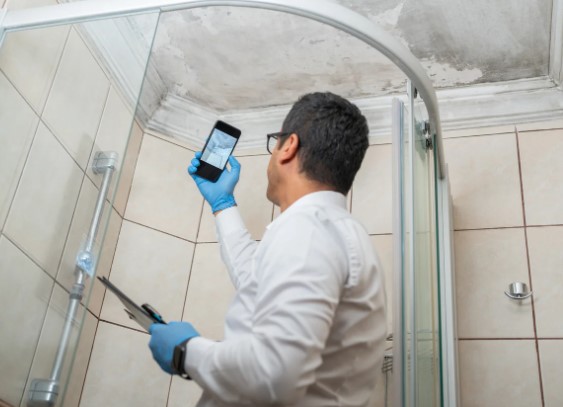As the silent intruder of the business world, mold can quietly grow in the hidden corners of your commercial space, symbolizing potential risks that are unseen yet ever-present.
When it comes to ensuring the safety and longevity of your El Segundo commercial property, a comprehensive mold inspection is a crucial step to take.
But how can you truly be sure that your work environment is free of this lurking menace without a professional evaluation?
Benefits of Early Detection
Early detection of mold in commercial spaces can lead to significant cost savings and prevent potential health risks for occupants. By catching mold growth early on, you can address the issue before it spreads and causes extensive damage to your property. This proactive approach not only saves you money on remediation costs but also minimizes the disruption to your business operations.
Identifying mold at an early stage allows you to take swift action to eradicate the problem, protecting the health of employees and customers who frequent your commercial space. Mold exposure can lead to various health issues, including respiratory problems, allergic reactions, and skin irritation. By detecting mold early, you can create a safer and healthier environment for everyone involved.
Moreover, early detection of mold demonstrates your commitment to maintaining a clean and hygienic workspace. It enhances your reputation among clients and employees, showcasing your dedication to their well-being. Investing in regular mold inspections can ultimately safeguard your business, finances, and the health of those who occupy your commercial property.
Common Mold Types Found
In commercial spaces, the identification of common mold types found is essential for comprehensive mold inspections in El Segundo. Mold identification is crucial for effective prevention and mitigation strategies.
Among the common mold types encountered in commercial settings are Aspergillus, Penicillium, Cladosporium, and Stachybotrys chartarum (black mold). Aspergillus and Penicillium are frequently found indoors and can cause respiratory issues. Cladosporium is known for its black or green appearance and can grow on fabrics, carpets, and wood surfaces. Stachybotrys chartarum, commonly referred to as black mold, thrives in damp areas and can produce mycotoxins harmful to human health.
Understanding the environmental impact of these molds is vital in determining the appropriate mitigation measures. By recognizing these common mold types during inspections, proactive steps can be taken to address moisture issues, improve ventilation, and prevent further mold growth, safeguarding the health of occupants and preserving the structural integrity of the commercial space.
Health Risks Associated
Identifying the health risks associated with exposure to common mold types in commercial spaces is imperative for ensuring occupant safety and well-being. Mold exposure can lead to various health issues, including respiratory problems such as coughing, wheezing, and throat irritation. Individuals with allergies or asthma may experience exacerbated symptoms when exposed to mold. Prolonged exposure to certain molds like Stachybotrys chartarum can even cause severe reactions in some individuals.
To mitigate health risks, implementing prevention strategies is crucial. Regular mold inspections and prompt remediation of any identified issues are essential steps in maintaining a healthy indoor environment. Ensuring proper ventilation and controlling indoor humidity levels below 60% can help prevent mold growth. Additionally, promptly addressing water leaks and moisture intrusion is vital in preventing mold proliferation.
Inspection Process Overview
To effectively address the health risks associated with mold exposure in commercial spaces, a systematic approach to the inspection process is essential. Inspection techniques involve a thorough visual assessment of the property to identify any visible signs of mold growth. This includes checking common areas where moisture accumulates, like basements, bathrooms, and kitchens. Infrared cameras may be used to detect hidden moisture sources behind walls or ceilings. Additionally, air sampling can help determine the concentration of mold spores in the indoor environment.
Once the inspection is complete, if mold is detected, the remediation process begins. This involves removing the mold and addressing the root cause of the issue to prevent future growth. Remediation methods may include cleaning and disinfecting affected areas, using HEPA vacuums to remove spores, and repairing any leaks or ventilation problems. It’s crucial to follow industry guidelines and regulations during the remediation process to ensure the safety of occupants and prevent mold recurrence. By following these inspection techniques and remediation processes, you can effectively manage mold issues in your commercial space.
Benefits of Early Detection
Detecting mold early in commercial spaces offers numerous advantages, including preventing extensive damage and reducing health risks for occupants. By identifying mold growth at its incipient stage, you can implement timely prevention methods to curb its spread throughout the property. Early detection allows for targeted interventions, which are typically more cost-effective solutions compared to addressing widespread contamination. Swift action upon early detection can prevent the need for extensive remediation efforts, which not only saves on repair costs but also minimizes disruptions to business operations.
Moreover, early detection of mold in commercial spaces is crucial for safeguarding the health of occupants. Mold spores can trigger respiratory issues, allergies, and other health problems, particularly in individuals with sensitivities. By promptly identifying and addressing mold growth, you can create a healthier indoor environment for employees and visitors, thus reducing the risk of health-related concerns. Overall, early detection of mold in commercial settings isn’t only a proactive measure but also a strategic investment in maintaining a safe and productive workspace.

